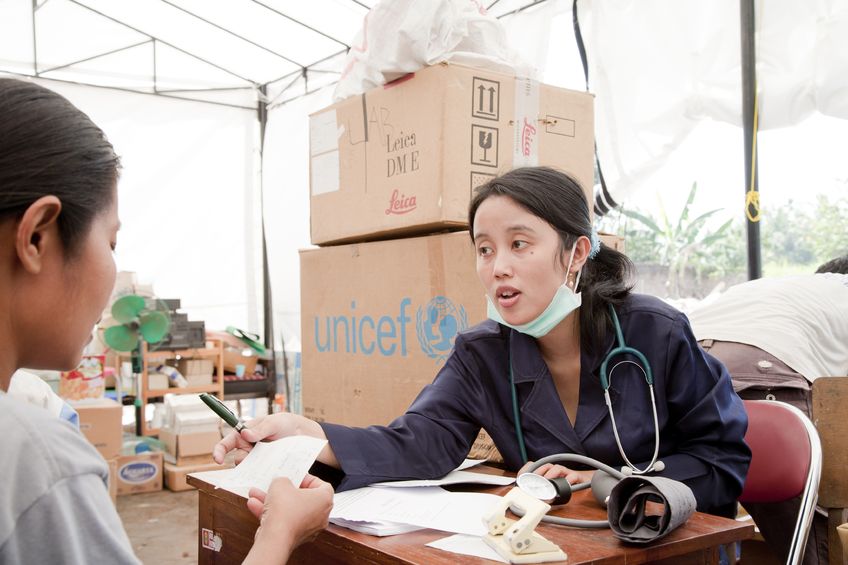Breaking 6 myths on disaster preparedness, and making every Filipino even more resilient

Image: INQUIRER.net stock photo
The Philippines has the misfortune of being prone to all natural hazards, save for a snow storm. This includes earthquakes, volcanic eruptions and typhoons.
But when Toni Zuñiga of the Philippine Disaster Resilience Foundation (PDRF) asked us—the participants of the Family Preparedness Planning Workshop conducted by the foundation with Pilipinas 911—if anyone had a disaster preparedness plan on paper, none of us raised our hands.
Like most Filipinos, I have taken for granted that disasters could happen anytime, and should anything happen to me, I thought it just meant it was my time to go. But after completing the workshop, I learned that there was a lot more in our control than we realize.
As they say, the first step towards change is awareness. We can start our path to being disaster-ready by unlearning some myths.
Myth no. 1: Typhoons and earthquakes are natural disasters.
I learned in this workshop that the term “natural disaster” is a misnomer. There are natural hazards such as typhoons, earthquakes and tsunamis; and human-induced hazards such as armed conflict, pollution or fires.
These only become disasters when those affected cannot cope with the hazards, whether it’s due to lack of resources or preparation.
Myth no. 2: Hazards are beyond our control.
According to a World Risk Report, we are the country that is third most at risk because of our geography and our slow capacity to cope with hazards. To enhance our understanding of disaster preparedness, we learned some basic terms.
Risk is the probability that a negative consequence would happen. Capacity is our strengths, whether it’s first aid knowledge or quake-proof buildings. Vulnerability refers to weaknesses, such as poorly made structures or lack of preparation.
To decrease risk, the key is increasing capacity to offset vulnerability.
“You have the power to reduce risk,” says Zuñiga. “The more you know how vulnerable you are, the more you can think of solutions.”
Myth no. 3: Hazards are the same wherever you are in the country.
Zuñiga mentioned that we have 300 volcanoes, 22 of which are active, and one close to Metro Manila: the Taal Volcano. While 20 typhoons a year reach the Philippine area of responsibility, about five of these are destructive, though they rarely hit Mindanao.
Earthquakes also have varying intensities depending on where one lives and how strong or vulnerable the structures are in the area.
Thus, hazards will depend on where one lives in the country. When we started planning during the workshop, the first task we did was to list the hazards we experienced within the vicinity of our home within the last five years or so. From here, we could see a pattern and what we needed to prepare the most for.
Myth no. 4: Having an emergency bag means you are disaster-ready.
Prior to the workshop, we were asked about our expectations. Some of us mentioned that we wanted to know what items we needed to bring in a go-bag, but we soon figured out that this wouldn’t be enough.
Ruel Kapunan, managing director of emergency dispatch company Pilipinas 911, advises to make a written plan with your family, which includes meet-up points and stocking on necessary resources. A plan will also help you mobilize and be emotionally prepared when a hazard strikes—they noted that based on experience, many go into shock at zero hour.
And even then, a written plan is not enough. A plan also needs to be acted on and recalibrated every quarter so that we could find gaps in it. A participant suggested having a camp out with family to see how long you could last with resources.
Myth no. 5: Your disaster preparedness plan is applicable to all types of hazards.
After knowing that we needed to create a plan with our families, we found out that we also needed to make a plan per hazard, since an earthquake, typhoon and a fire will all have varying needs.
And since planning is also time-consuming albeit necessary, based on the list of hazards we came up with, we were able to decide which we needed to prepare the most for (hint: it’s something “Big”).
Myth no. 6: You should only rely on the government for rescue efforts.
While the government has their own plans in case of a disaster, “our contribution will be fewer people for the government to help,” says Kapunan. With 12.8 million people in Metro Manila, the government can only do so much.
While involving our families is crucial, this could be taken a step further by involving our community, whether it’s the neighborhood or the workplace. If everyone is in on a plan, more people can be safe during a disaster.
Kapunan also says there’s strength in numbers, and in cases of violence, big groups are less likely to be attacked.
Ultimately, disaster preparedness is also a mindset that needs to be passed on to the next generation. While we may not suffer from a disaster in our lifetime, given the risk of disaster in the country, our children are likely to experience it.
A participant from Japan shared that in her country, they were taught about disaster preparedness since kindergarten. Because of this, their people are able to bounce back even from a magnitude 9.0 earthquake.
Watch out for our next report which will focus on how to prepare for other hazards, including the Big One.
To learn about workshops on disaster preparedness, visit pdrf.org. For emergency dispatch services, visit pilipinas911.com. For tools and tips on disaster preparedness, visit ph72.org. JB
RELATED STORY:
Disaster preparedness: Anybody listening?














